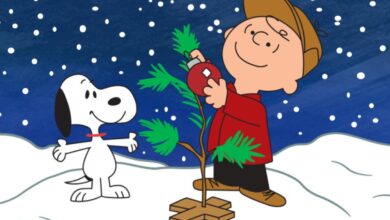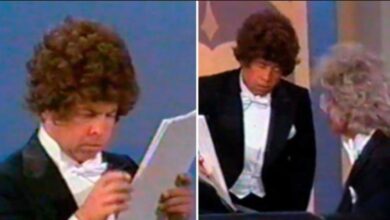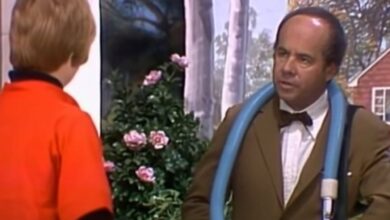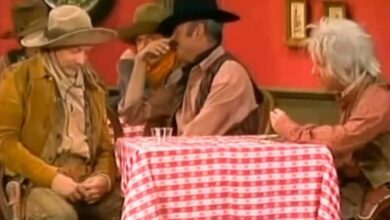The Statler Brothers’ “Flowers on the Wall” Breaks Genre Barriers and Captures a Generation in 1965
When “Flowers on the Wall” hit radio waves in 1965, it didn’t just introduce a quirky tune with catchy lyrics—it marked a significant moment of genre fusion and storytelling ingenuity. Performed by The Statler Brothers, the song reached No. 2 on the Billboard country chart and an astonishing No. 4 on the Billboard Hot 100, signaling its crossover appeal. At a time when the Beatles dominated popular music, a country quartet managed to carve out mainstream space with a song that sounded both classic and revolutionary.
The Statler Brothers, hailing from Staunton, Virginia, were not biological brothers, but their vocal harmony was tight enough to fool anyone. Originally formed as a gospel group in the 1950s, they took their name from a brand of facial tissue. Their transition to country music was catalyzed when they joined Johnny Cash’s touring ensemble in 1964, which exposed them to a broader national audience and set the stage for their breakthrough hit.
Written by the group’s original tenor, Lew DeWitt, “Flowers on the Wall” was conceived during downtime on the road. DeWitt penned the lyrics as a light-hearted commentary on loneliness and psychological denial. With references to playing solitaire with a deck of 51 and watching Captain Kangaroo, the song artfully disguises emotional isolation behind whimsical absurdity—a literary quality rare in popular music at the time.
The track was recorded at Columbia Studios in Nashville with production handled by Don Law and Frank Jones. Musically, the song is minimalist—built on a sparse guitar riff, upright bass, and simple percussion that allowed the lyrics and vocal harmonies to shine. Lead vocals were handled by DeWitt himself, whose gentle, almost cheerful delivery added irony to the melancholy subject matter.
Upon release, the song gained traction slowly but steadily. What began as a regional favorite quickly turned into a national sensation. By early 1966, “Flowers on the Wall” had become a staple on both country and pop radio. It won the 1966 Grammy Award for Best Contemporary (R&R) Performance by a Group, beating out acts more traditionally aligned with pop and rock, a testament to its broad appeal.
Culturally, “Flowers on the Wall” struck a chord during a decade of seismic social change. The Vietnam War, the Civil Rights Movement, and generational divides made themes of disconnection and introspection especially resonant. The song’s protagonist may have been fictional, but his sense of drifting through routine in isolation mirrored the quiet anxieties of many Americans in a changing world.
For The Statler Brothers, the song catapulted them into a long and decorated career. Though they would later become more associated with nostalgic and gospel-tinged country music, “Flowers on the Wall” gave them instant credibility and an audience that extended far beyond traditional country listeners. It opened doors to national television, world tours, and over three decades of musical success.
Beyond its impact on their career, the song also influenced a generation of musicians who admired its blend of literary lyrics, wry humor, and emotional depth. Artists like Roger Miller and even Kris Kristofferson would later cite the Statlers’ ability to merge storytelling with melody as a major influence on their own writing.
Numerous covers and homages followed. Perhaps most famously, the song was featured in Quentin Tarantino’s 1994 film Pulp Fiction, where Bruce Willis’s character hums along to it in a surreal moment of narrative calm before the storm. The inclusion introduced the song to a new generation and reaffirmed its timeless charm and eerie relatability.
At the time of the song’s rise, the Statlers were still under the wing of Johnny Cash, often opening his shows. This connection provided a unique platform, but it was “Flowers on the Wall” that let them step into the spotlight on their own terms. The single’s success marked the beginning of their shift from background harmonizers to country music headliners.
Even decades later, the song remains a mainstay on classic country stations and continues to appear in “best of” lists that cross genre lines. Its mixture of understated musicality and poetic wit gives it a durability that few novelty songs can match. It’s a reminder that cleverness and heart can coexist without sentimentality.
Critically, the track has often been praised for its subtext. What sounds like comic absurdity on first listen reveals itself, upon reflection, to be a meditation on loneliness, denial, and the human capacity for self-deception. This duality helped expand what country music could be, challenging stereotypes and inviting deeper analysis.
“Flowers on the Wall” paved the way for artists who sought to blend humor with pathos and simplicity with complexity. Its structure, delivery, and lyrical tone influenced everything from folk to alt-country in the decades that followed, proving that storytelling could be both artful and accessible.
Though the Statlers would go on to win CMA Awards and build a legacy as one of country music’s most beloved vocal groups, no single song would carry their name further than this one. It’s a track that continues to surprise, delight, and provoke thought even fifty years after its release.
In the end, “Flowers on the Wall” remains a shining example of how a simple song, delivered with sincerity and craft, can transcend genre and era. For the Statler Brothers, it wasn’t just a hit—it was a declaration that country music had room for humor, intellect, and subtle emotional power.





